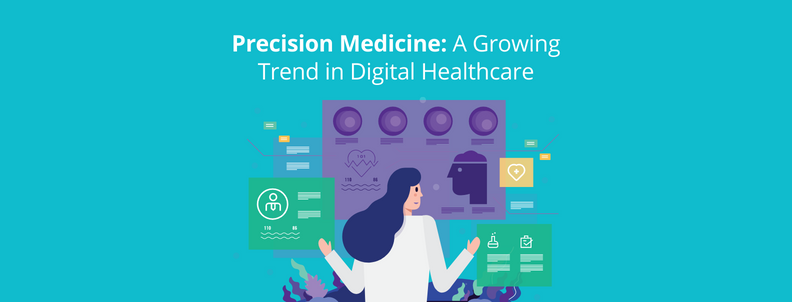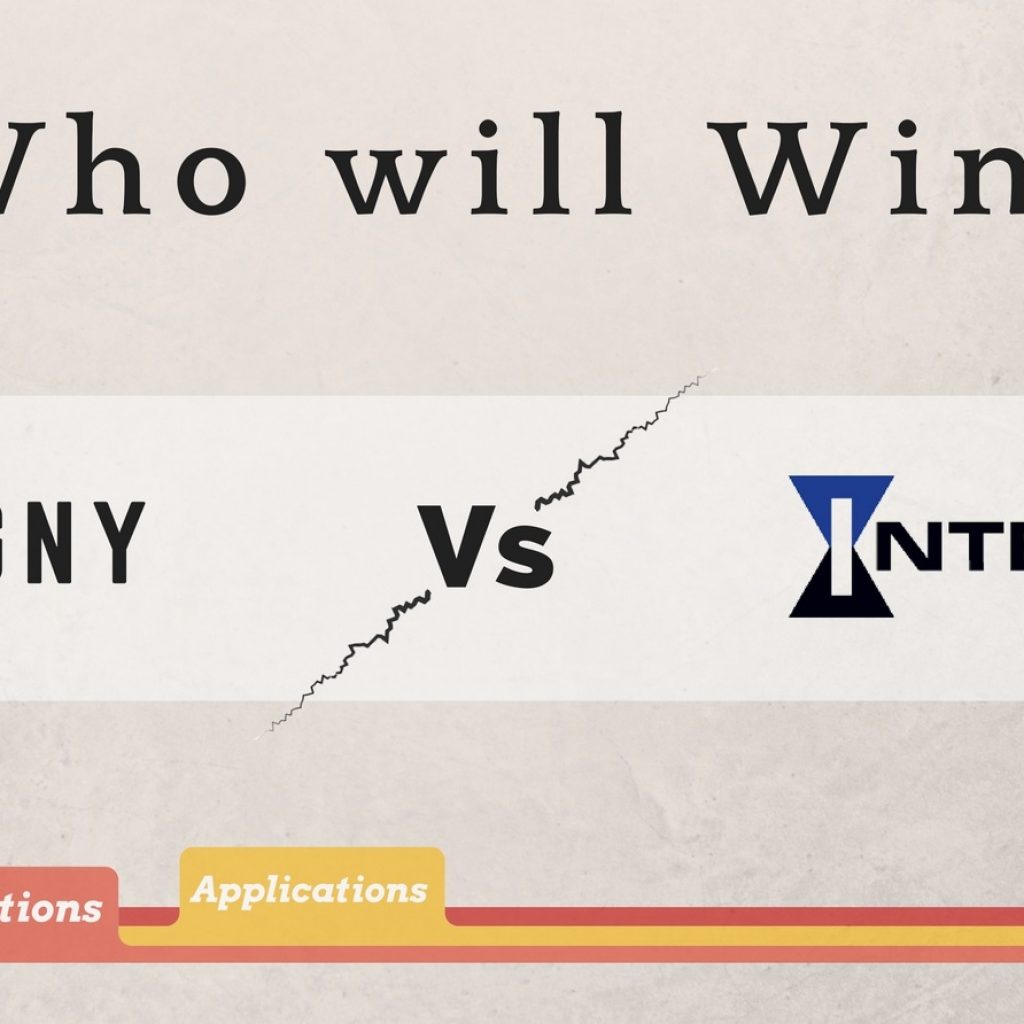As every individual reacts to a treatment process differently, the one-size-fits-all approach isn’t always successful. Thanks to Precision medicine, doctors can now formulate strategies to treat their patients individually.
Approvals by the FDA for precision medicine jumped to 40% percent in 2018, which was previously just 20% between 2013 and 2018.
Therefore, confirming the legitimacy of this technology.
In this article, we discuss the driving factors and recent developments in the field of Precision Medicine.
Interested in More Digital Healthcare Trends in 2024? Fill out the form below to get the report:
So, without further ado, let’s look at the factors responsible for its tremendous growth-
Factors Influencing the Growth of Precision Medicine
AI & big data
A report by NIH confirms that Precision medicine programs aim to generate and analyze large health databases using AI and big data analysis. This analysis can help develop biomarkers that can be used to predict, diagnose, and treat specific disease subtypes.
Thus, easing up the whole process involving collecting, processing, and interpreting the medical data.
Approvals from regulatory bodies
Not only did the approvals by FDA got double, but according to a report by PMC, in 2021, FDA also approved 17 new personalized medicines, which accounted for more than a quarter of the drugs the agency approved in the past seven years. That’s huge!
Furthermore, both EMA and FDA saw the need for flexible regulations and new guidelines for Precision Medicine. The former even defined supporting developments in Precision medicine as its foremost strategic goal.
Consumer awareness
A study by PMC found that even those unaware of personalized medicine initially showed a positive response once they learned about it. Thus, determining the fact that the general public is all ready to see this technology in action.
As a result, a lot of entities are innovating in the space. Interestingly, universities seem to have the upper hand. Let’s see how.
Who is working on Precision medicine?

Significant collaborations in Precision medicine


The University of California and AstraZeneca (another Core company) are using pharmacokinetic modeling to predict the efficacy of IL23 antagonists (such as the anti-IL23 monoclonal antibody) in treating Crohn’s disease. They have even filed a patent (WO2022187657A1) to protect their innovation.


QU Biologics, a Canadian Biotech startup, collaborated with Ottawa Hospital Research Institute to research mycobacterial immunotherapy for cancer treatment. The patent (WO2022198322A1) calls for surgical treatment in combination with neoadjuvant or adjuvant preparations, containing innate immunogens such as microbial components, to enhance the immune response.


The Korean startup KBlueBio and Chonnam National University collaborated to find innovative precision medicine solutions. Their patent (WO2022186673A1) is based on designing an RNA sequencing panel & the corresponding analysis algorithm.
It is evident that universities worldwide are actively exploring the field of Precision medicine.
Some recent innovations in Precision medicine
Identifying the cancer type using ML-based algorithms
OncXerna, a US-based startup, developed a platform that uses proprietary RNA-based gene expression data and machine learning algorithms to classify patients based on the dominant biologies of their cancer.
The solution allows clinical researchers to develop algorithms for effective treatment using RNA signatures derived from the biomarker panels.
With this innovation, the startup aims to match a patient to the treatment rather than generalizing treatments for the whole population.
They also presented their success data at the European Society for Medical Oncology (ESMO) Congress 2022.
The shared data suggested that Xerna TME Panel can more accurately predict which Esophageal cancer patients would benefit more from a particular treatment.
3D twining the tumor and using ML for future diagnosis
Precomb Therapeutics, a Swiss startup, is working on the development of evidence-based therapy decisions in cancer.
The technology uses a fresh sample of a patient’s tumor and generates a lot of representative 3D tumor twins. Further, it analyzes their susceptibility or resistance to various cancer drugs and combinations.

Deep learning technologies help analyze and aggregate individual treatment responses into the startup’s proprietary drug response database. This database serves as the basis for population-based predictions.
The approach provides individual treatment options, enables researchers and oncologists to gain insights beyond each patient, and helps identify new therapies or treatment concepts.
Since the treatments from precision medicine depend on the genomic data obtained from patients, the importance of this technology is already being recognized by core companies and big IT players.
Let’s look at what these tech giants are doing-
What are tech giants doing in the field of “Genome Sequencing”?
Google is working on determining a sample genome from read fragments and the reference genomes. The giant even got a patent (WO2022165430A1) for their innovation.
On the other hand, IBM is working on downsampling DNA sequence data. Their patented (WO2022003454A1) method uses variational autoencoders and preserves the original file’s genomic integrity.
Not only this, but the Indian Tech Giant Tata Consultancy Services is working on a system for predicting the effect of genomic variations on pre-mRNA splicing. This patented (US20200152288A1) method is important to overcome phenotypic complexities.
Conclusion
After conducting a Patent analysis in this field, we found that the highest number of innovations (~45%) were targeted toward the detection and analysis of genetic content or other molecular or cellular analysis.
While the remaining 55% of innovations focused on treatment strategies and medicines for various diseases such as cancer, diabetes, COVID-19, etc., out of all these diseases, Cancer accounted for almost 55% of the innovations.
Therefore, we believe that it won’t be long before there is a breakthrough in the field of Cancer treatments through Precision medicine.
Want to grab our complete analysis of digital healthcare trends? Fill out the form below, and we’ll deliver it right to your inbox.
Authored By: Ambuj, Navjit, and Sushant, Patent Intelligence
Edited By: Ridhima, Marketing
Also read: Digitalizing The Healthcare Sector: What Should We Expect In 2024?









